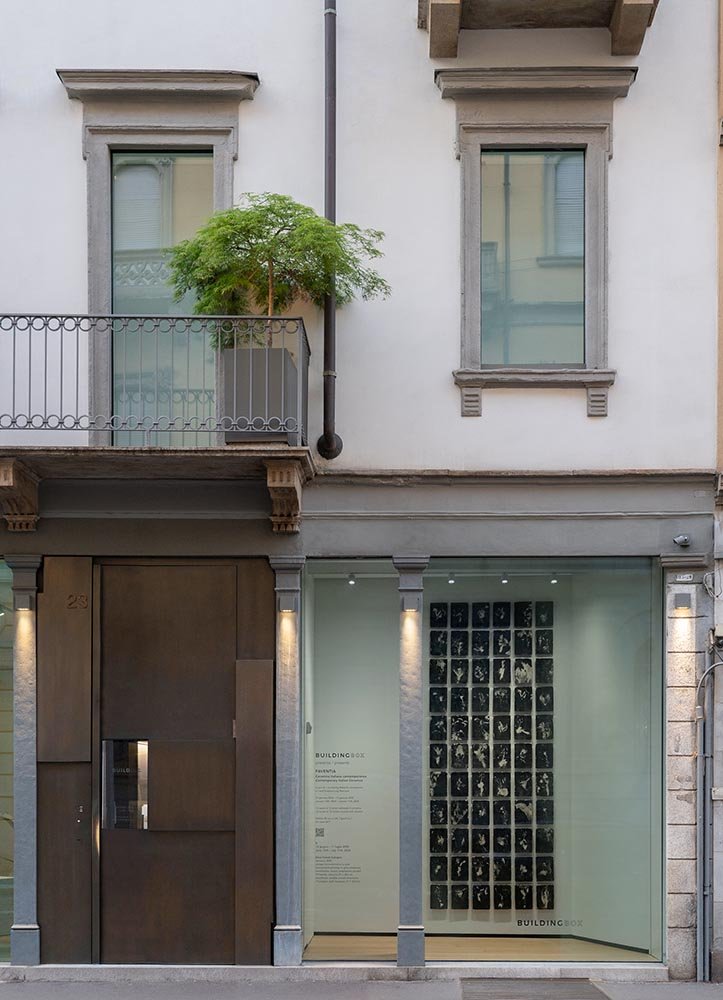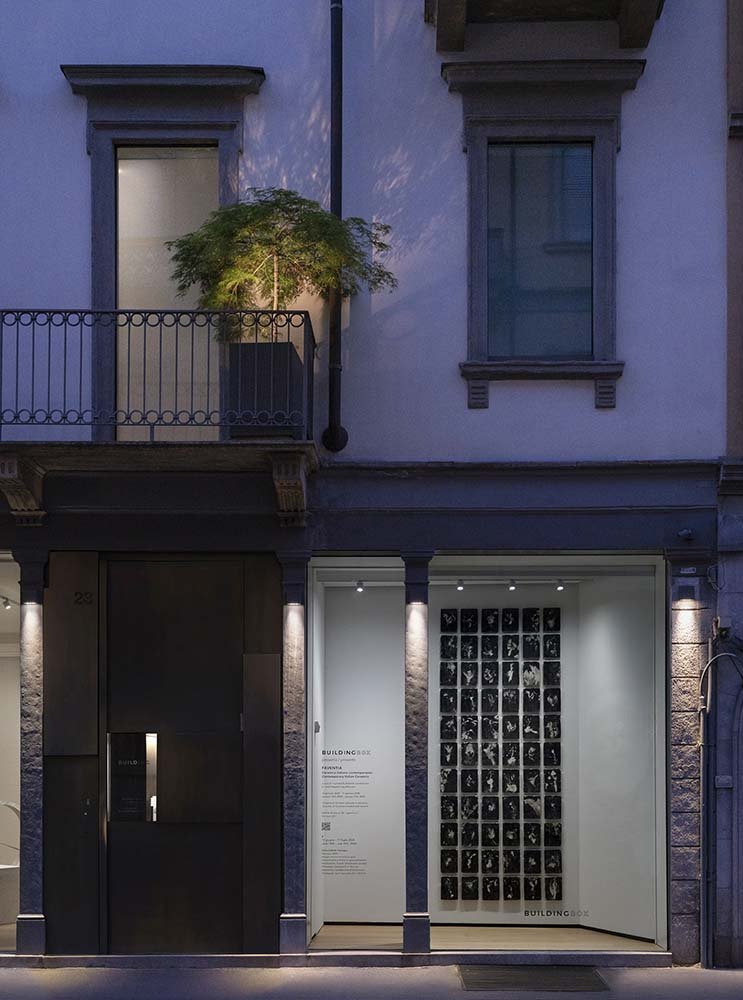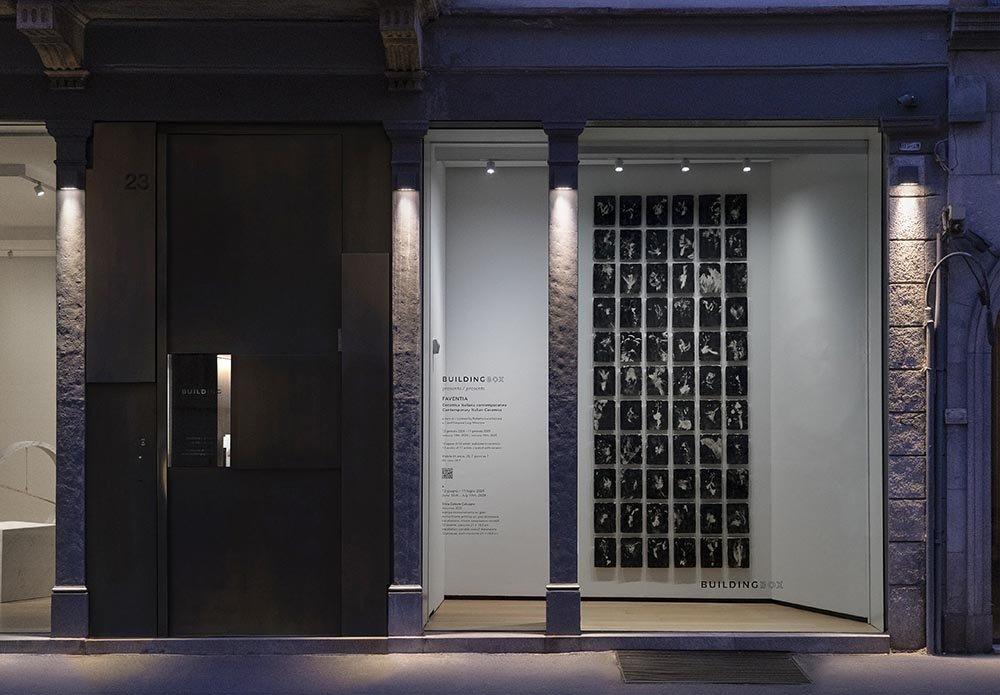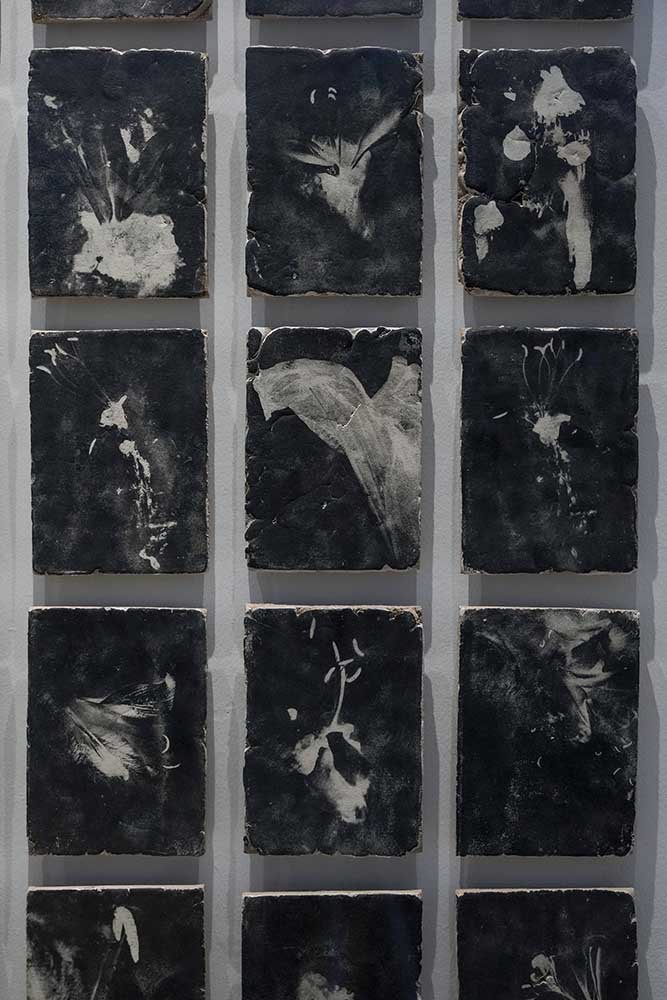FAVENTIA – 6/12. Silvia Celeste Calcagno
12.06.2024 – 11.07.2024
From June 12th, 2024, to July 11th, 2024, BUILDINGBOX hosts the work Veronica (2020) by artist Silvia Celeste Calcagno (Genoa, 1974).
The title of the installation host in the exhibition FAVENTIA. Ceramica italiana contemporanea [Contemporary Italian Ceramics] evokes the evangelical figure of Veronica, whose enigmatic story – developed in the Middle Ages, though drawn from the Holy Scriptures – can be traced back to the existence, in antiquity, of a fabric relic imprinted with the face of Christ. The very name of the woman apparently derives from the combination of the Latin adjective vērus and the Byzantine Greek noun εἰκών (icon), to indicate the “true image” of Jesus, among those considered not to have been painted by human hand. An ephemeral, transitive and mortal trace of the face, Veronica’s veil consigns to memory a moment of existence, capturing the purely exterior nature of a mask, of a surface. Associated with this delicate suggestion is the production of the clay tablets created by the artist using a monochrome print, an image of flowers and plants, fragile subjects and symbols of fleeting beauty and inexorable transience. The explosive and passing splendour of flowers represents a motif of profound veneration in the spirituality of many oriental cultures, as in the case of the Japanese Hanami, in which the plant becomes an allegory of human existence and cyclic nature.
In the use of the fireprinting® technique – developed and patented by Calcagno herself, and already the object of prestigious recognition in the form of the Premio Faenza, awarded to an Italian woman for the first time in 2015 – the impression of the image is made directly on a material support on which the artist makes a painterly intervention, using black oxide followed by a high-temperature single firing. This method renders each piece unique and unrepeatable as well as involving the affective and meditated action of a “return to the earth” of the vegetal element, in a process symbolically reconciling life with the soil. Over the years, Calcagno – who currently works in Albissola, another major centre of Italian ceramics – has perfected this process to the point where she has achieved results of the highest technical skill capable of retaining extraordinary effects of glazing and transparency, exhibiting her work nationally and internationally. In 2018, she held a solo exhibition and workshop at the Museo Carlo Zauli in Faenza.
From January 12th, 2024, to January 11th, 2025, BUILDINGBOX presents FAVENTIA. Ceramica italiana contemporanea [Contemporary Italian Ceramics], an exhibition project curated by Roberto Lacarbonara and Gaspare Luigi Marcone, involving twelve Italian artists invited to exhibit sculptures and installations made of ceramics. This programme is dedicated to the centuries-old artistic tradition of the city of Faenza, one of Italy’s main production districts, as well as the seat and epicentre of themed projects and museums such as the “MIC International Ceramics Museum”, the “Premio Faenza”, and the “Museo Carlo Zauli”. Furthermore, the exhibition was conceived as a tribute toward an area affected by the flood of May 2023.
As with BUILDINGBOX’s usual annual schedule, the exhibition hosts monthly interventions. In this edition, the artworks will be presented on the 12th day of each month. This “numerology” alludes to the cyclical nature and synthesis of earthly, spiritual, and temporal elements, as well as the numerous symbologies associated with the number 12 in history and cultures from different parts of the world.
The project maps and summarises some of the main artistic expressions related to the 20th and 21st centuries ceramics, promoting a series of artists from different generations who, consistently or sporadically with respect to their own production, use clay working techniques by continuing, recovering, or revolutionising the extraordinary manual skill of moulding, and the chromatic-luminist value of the glazes.
The ancient Faventia has been a land of artisan production since Roman times, a characteristic that was enhanced in later centuries. Indeed, it became synonymous of the majolica ceramics in many languages – French (faïance), English (faience). In recent years, many artists have used the Faenza kilns – also thanks to residency programmes, exhibitions, workshops, prizes, and publications – for the artistic production of medium and large-scale sculptures, often designed for an environmental development and installation purposes. The primal, demiurgic act of shaping the clay gives ceramics an exclusive status, almost an ontology, the auroral condition of sculpture. In the manipulation’s plastic immediacy that precedes the firing that crystallises the piece, there is all the naturalness of a slow, thoughtful transformation poised between design and chance. In ceramics, as in drawing, there is the seed of an origin, that appears on the surface of the image and things in the precise moment of their conception. Ceramics – beyond the categorisations between craft, art, functional objects, unique, or mass-produced piece – possesses an intermediary (or intermediality) between thought and gesture, sign and sculpture, form and colour, operating, moreover, with various natural elements such as earth, water, and fire; and by hybridising artistic languages, techniques, research, and knowledge between artists and artisans.







